by Carmen J. Melendez-Quintero
Manager of English Learners Programs, Worcester Public Schools, Worcester, MA
Research and literature abounds on the topic of the impact of parental involvement in student’s success. The biggest influencers, outside of teachers, in a child’s educational trajectory, are his or her parents or caretakers. Families, regardless of their own educational background, are able to propel their children to excel and succeed in life, like no other adult in that child’s life can. Schools and districts need to leverage this fact and seek families to become allies and inform schools as experts of their child. Families can inform and support what schools and teachers attempt to do every day. In order to do this effectively, schools and teachers need to employ more culturally responsive strategies when working with students and their families, particularly families of English language learners.
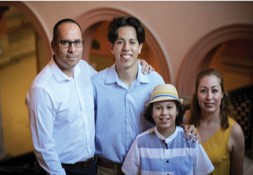
Some traditional ways we regularly use to engage families like parent-teacher conferences, potluck dinners, school performances, PTO meetings and so on, may inadvertently neglect to engage families from diverse cultural and linguistic backgrounds. These parental engagement models and practices perpetuate the status-quo. With the increasing growth of diversity of our student population, it is critically important that we provide culturally responsive venues for families that are representative of our student body in order to engage effectively and strategically with all of our students and families.
I will share different approaches to family engagement that I have found to be very effective in connecting with families of English language learners and from diverse backgrounds. I will speak to three levels of family engagement: district-wide efforts, school-level efforts and community partnerships. The more and different ways we use, the better chances we have to a wider extension of reach to families.
District Level Efforts
On the district level, districts could launch parent councils for families of English Language learners. Many states have passed into law for districts with large populations of English Learners, a requirement to have parent councils for English learners’ families. For example, In Massachusetts on November 22, 2017, Governor Baker signed the Language Opportunity for Our Kids (LOOK) Act, which required districts with more than 100 EL families to have an ELPAC(English Learners Parent Advisory Council). Whether your state or not requires an ELPAC, district-wide meetings are a great opportunity to create a forum for families to build relationships with other families of similar backgrounds, use each as resource and ultimately join together to work alongside district leadership to inform on educational issues.. Here is some practical advice that may help districts start their own parent council for families of English Language learners:
- Start with a cohort of parent leaders. Ask principals for names of parents of Els that they have established relationships with that could be good candidates for that parent leader cohort. Also, ask community partners that work with families to refer names as well.
- Meet with the cohort of parents to collaboratively elaborate on the goals of the parent council and outreach efforts.
- The parent cohort should be in charge of the agenda of the meetings with support from the district. This effort validates the families and sends a clear message from the district that we see our parents from an asset lens. This is a great step to start building trust with the families.
- Create opportunities for the parent cohort to meet with district leadership to share their input and share the voices of the other families to be heard.
- Districts could support the parent councils by providing space for meetings, childcare, food, interpreters, promotional materials and planning facilitation.
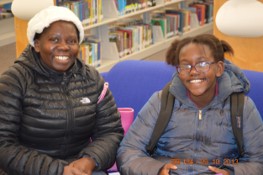
Districts could also host “Welcome to our Public Schools” events at the beginning of the school year for new EL families. Some of the topics could include: Introduce district leadership, EL Department staff, understanding ESL instruction and programs for ELs, the value of preserving the home language, and introducing community partners’ programs that may assist newly arrived families. A great venue for this event is the public library. Work with city offices to give parking allowance for the event so families don’t have to pay. Ask the library to give tours at the end of the event and show families where books in different language are located and share information about classes that may be of interest to families like ESL and Citizenship classes.
During the summer months is a great opportunity to run Early Literacy parent groups that promotes bilingualism and biliteracy. Families come together to share strategies to help their preschooler to read and are encouraged to use the repertoire of two languages. A great venue for this activity is a church or a place of worship, a place where families are familiar and comfortable fellowship with other families. Create a series of workshops that build on each other.
Celebrating and elevating home language with initiatives like the Seal of Biliteracy is a great opportunity for district to share with families that they not only promote bilingualism but honor the home language skills students bring to the schools. Another asset-based approach that would be well received by the families
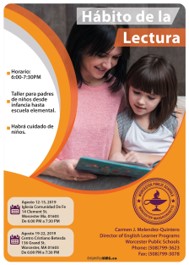
School-Level Efforts
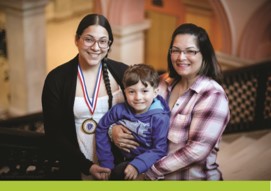
Comprehensive family engagement at the school level support the culture and climate of that school that will support students’ success. With this goal in mind, schools could create events like “EL Family Breakfasts”. One of our elementary school in our district does these breakfasts events where topics like language development, literacy, technology, are discussed in a nurturing environment.
“This is an opportunity to build upon our ELL parent’s strengths for a continued culture of respect throughout the school community. This intentional effort supports parents to get involved and be invested in the schools’ efforts. Teachers also benefit immensely because it will allow the cultivation and deeper understanding of ethnic and linguistic backgrounds of their students. The key for any school-level event is to honor the input received through action. The more parents have the opportunity to shape activities and programs that help their families, the more invested they will be in seeing those efforts succeed” -WPS ESL teacher.
Schools could move beyond the multicultural potluck and make a “Gala Event” that celebrates culture and language where entire families and their cultures are highlighted and appreciated. It’s a great way for families to share with others their background and the richness of their culture that goes beyond food. Other schools have recruited “abuelos” that visit classrooms in the dual language programs and support with activities like reading and storytelling. In this case, this effort brings the expertise of family into the classroom.
Community Partnerships
Lastly, another level of culturally responsive family engagement is with community organizations that have a history of working with families of English language learners. Districts could establish regular meetings with community partners that work with immigrant and newly arrived families to find ways of intersection. Find organizations that already have an established trust with families and perhaps using their venues and events to share common topics may be another way to increase visibility with the families. One example of that, our district worked with our community partners to collaborate on efforts of the Seal of Biliteracy and promoting bilingualism and biliteracy.
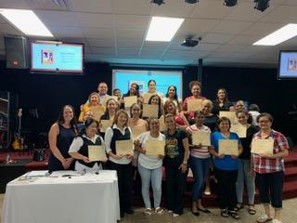
Faith-based organizations are another under-utilized venue. We learned as a district churches are very powerful and an effective way of engaging families. Last year our district reached out to churches that serve the Latino community. At the churches, we led bilingual workshops for families that pertained to education. In collaboration with the Sped Department, The ELL Department created workshops, using feedback from the pastors, for families of children 0-5 on various topics like Behavior Change, School Readiness, Speech and Language and Fine and Gross Motor Skills. The pastors expressed to us that doing these workshops would support gaining the trust from the families at a very early stage of the child’s education.
In conclusion, districts and schools need to expand their capacity and understanding on how to reach all families in a culturally responsive way. The first thing we have to do is learn who our students are and where they come from. I recommend using professional development opportunities that invite families to inform staff on various issues. Doing community scavenger hunts and family home visits are other ways of expanding staff understanding of the families’ context and background. For a district to be successful in its efforts for access and equity for all students, family engagement needs to be at the forefront of their plans. Districts need to move beyond the status-quo and concentrate in culturally responsive methods that involve schools-level efforts, community resources and district-level efforts for a comprehensive way of reaching families of English Language Learners.
References
Johnson, M. (2012). The 21st century parent: Multicultural parent engagement leadership strategies handbook. Charlotte, NC: Information Age.
Olivos, E. M., Jiménez-Castellanos, O., & Ochoa, A.M. (Eds.), Bicultural parent engagement: Advocacy and empowerment . New York, NY: Teachers College Press.
Arias, M. B., & Morillo-Campbell, M. (2008). Promoting ELL parental involvement: Challenges in contested times. Tempe: Education Policy Research Unit, Arizona State University
Gay, G. (2000). Culturally responsive teaching: Theory, research and practice. New York: Teachers College Press.
Gutierrez, K. (. (2002). Studying cultural practices in urban learning communities. Human Development, 45(4), 312-321. Lightfoot, S. (2003). The essential conversation: What parents and teachers can learn from each other. New York: Random House.